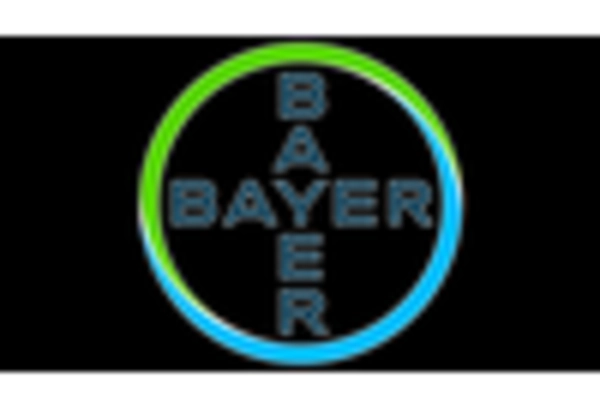Rising Incidence of Obesity
The rising incidence of obesity in China is a significant driver for the polycystic ovarian-syndrome market. Obesity is a well-known risk factor for developing polycystic ovarian syndrome, and as the obesity rates continue to climb, the prevalence of this syndrome is likely to increase correspondingly. In 2025, it is estimated that over 30% of the adult population in urban areas will be classified as obese, which could lead to a higher demand for treatments and management options for polycystic ovarian syndrome. This correlation suggests that healthcare providers may need to focus more on lifestyle interventions and pharmacological treatments to address both obesity and its associated reproductive health issues. Consequently, the polycystic ovarian-syndrome market may experience growth as healthcare systems adapt to these changing demographics.
Growing Healthcare Expenditure
The increasing healthcare expenditure in China is a pivotal driver for the polycystic ovarian-syndrome market. As the government allocates more funds towards healthcare, access to diagnostic and treatment options for conditions like polycystic ovarian syndrome is improving. In 2025, healthcare spending in China is projected to reach approximately $1 trillion, reflecting a growth rate of around 10% annually. This financial commitment enables healthcare facilities to invest in advanced technologies and treatments, thereby enhancing patient outcomes. Furthermore, the rise in disposable income among the population allows more women to seek medical assistance for reproductive health issues, including polycystic ovarian syndrome. Consequently, this trend is likely to bolster the demand for effective therapies and interventions within the polycystic ovarian-syndrome market.
Increased Focus on Women's Health
There is a notable shift towards prioritizing women's health in China, which significantly impacts the polycystic ovarian-syndrome market. The government and various organizations are launching initiatives aimed at raising awareness about women's health issues, including reproductive disorders. This focus is reflected in the establishment of specialized clinics and health programs dedicated to conditions like polycystic ovarian syndrome. In 2025, it is estimated that around 30% of women in urban areas are aware of polycystic ovarian syndrome and its implications. This heightened awareness is likely to lead to earlier diagnosis and treatment, thereby increasing the demand for healthcare services and products related to the polycystic ovarian-syndrome market. Additionally, educational campaigns are expected to further enhance understanding and management of this condition.
Government Initiatives and Policies
Government initiatives and policies aimed at improving reproductive health are crucial drivers for the polycystic ovarian-syndrome market. In recent years, the Chinese government has implemented various health policies to enhance women's health services, including those addressing polycystic ovarian syndrome. These initiatives often include funding for research, public health campaigns, and subsidies for treatments. In 2025, it is anticipated that government spending on women's health will increase by approximately 20%, which could lead to improved access to care for women suffering from polycystic ovarian syndrome. Such policies not only promote awareness but also facilitate the development of new treatment options, thereby positively influencing the polycystic ovarian-syndrome market. The commitment to women's health reflects a broader understanding of the importance of addressing reproductive health issues in the population.
Technological Advancements in Diagnostics
Technological advancements in diagnostic tools are transforming the landscape of the polycystic ovarian-syndrome market. Innovations such as non-invasive imaging techniques and genetic testing are becoming more accessible in China, allowing for earlier and more accurate diagnosis of polycystic ovarian syndrome. In 2025, the market for diagnostic devices is projected to grow by approximately 15%, driven by the increasing adoption of these advanced technologies. Enhanced diagnostic capabilities not only facilitate timely intervention but also improve patient management strategies. As healthcare providers increasingly utilize these technologies, the overall efficiency of the healthcare system is likely to improve, leading to a more robust polycystic ovarian-syndrome market. This trend indicates a shift towards precision medicine, where treatments can be tailored to individual patient needs.

















Leave a Comment